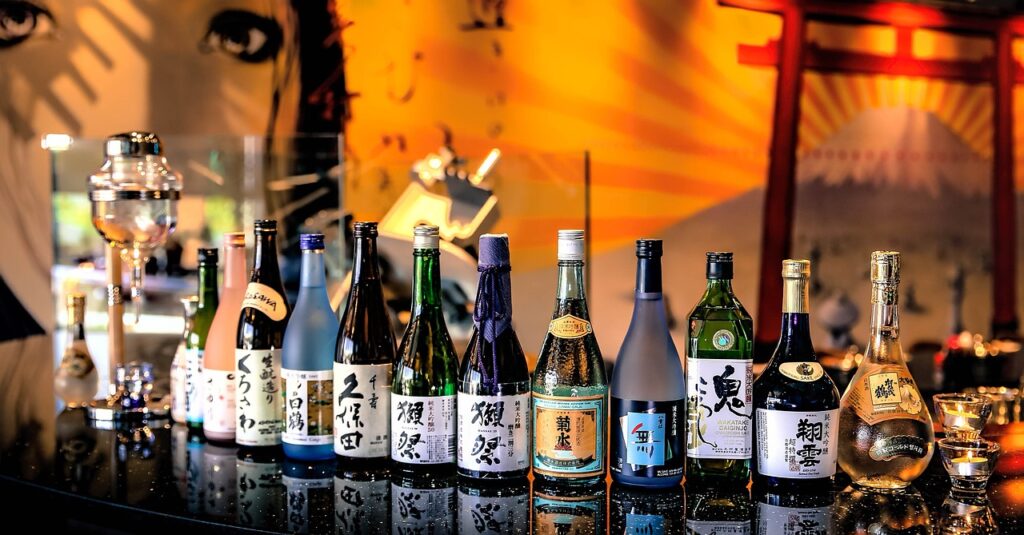🎉🗾🍣 Welcome to our Japanese travel blog! Let’s Enjoy Honshu’s Gastronomic Delights 🍜🎊
If you’re a foodie, Japan is the ultimate destination for you! Let’s enjoy Honshu’s gastronomic delights with Sakura Chronicles. This beautiful country boasts some of the world’s most delicious and unique dishes. From sushi to ramen, from tempura to okonomiyaki, Japanese cuisine is an absolute delight for the taste buds. But did you know that each region in Japan has its distinct culinary traditions?
That’s right, in Japan, food is not just about satisfying hunger, but it’s also a way of expressing regional identity and cultural heritage. Regional cuisine is deeply ingrained in Japanese culture and reflects the country’s diverse geography and cultural history. We will take you on a journey on Honshu’s Gastronomic Delights.
In this blog post, we’ll take you on a culinary journey through Japan and explore the rich and varied world of regional cuisine. We’ll discover how different regions have unique flavors, ingredients, and cooking techniques and learn about the fascinating stories behind some of Japan’s most iconic dishes.
So, get ready to tantalize your taste buds and join us as we dive into the delicious world of Japanese regional cuisine! 🍱🍢🍵
Japan’s Regional Cuisine
Japan has eight significant regions: Hokkaido, Tohoku, Kanto, Chubu, Kansai, Chugoku, Shikoku, and Kyushu. Each region has its unique culture and cuisine, heavily influenced by geography, climate, and history. The country’s long coastline means that seafood is an essential part of the cuisine in many regions, while others rely more on rice, noodles, and vegetables.
We will focus on the Honshu region, the largest island in Japan and home to the capital city, Tokyo. We will highlight some of the most famous Japanese dishes and their regional origins, such as sushi from Tokyo and okonomiyaki from Osaka. We will also preview some of the regional delicacies covered in this post.
Honshu Island is comprised of 5 regions:
Tohoku (東北地方, Tōhoku-chihō) is the northernmost region of Honshu. It is known for its mountains, forests, and seafood.
Kantō (関東地方, Kantō-chihō) is the easternmost region of Honshu. It is home to the capital city of Tokyo and the port city of Yokohama.
Chūbu (中部地方, Chūbu-chihō) is the central region of Honshu. It is known for its mountains, lakes, and hot springs.
Kansai (関西地方, Kansai-chihō) is the western region of Honshu. It is home to the ancient capital city of Kyoto and the modern city of Osaka.
Chugoku (中国地方, Chūgoku-chihō) is the southwestern region of Honshu. It is known for its mountains, rivers, and beaches.
Tohoku
Tohoku is in the northeast part of Honshu, and the cold, harsh winters and abundant seafood heavily influence its cuisine. Some of the region’s most famous ingredients include buckwheat, grilled salmon, and pickled vegetables.
Morioka’s jajamen noodles are also a must-try when visiting Tohoku. These noodles are served with a spicy, bean-based sauce and are incredibly flavorful. One of Tohoku’s most famous dishes is Hiraizumi’s wanko soba, served in small bowls. The idea is to keep eating the soba until you are full, with servers refilling your bowl as soon as you finish it.

Seafood is also a big part of Tohoku’s cuisine, with grilled fish and oysters being prevalent. Some great places to try these dishes include the Soma Nomaoi festival in Fukushima, which features a massive seafood BBQ, and the Sendai Pageant of Starlight, which has an impressive display of grilled seafood.
When looking for the best region cuisine, explore local food festivals and ask for recommendations from locals. Many small, family-run restaurants serve delicious, authentic dishes you won’t find in guidebooks.
Kanto
Following our journey on Honshu’s Gastronomic Delights, the best food is Kanto, according to some people! Kanto is located in the eastern part of Honshu and is home to Tokyo and Yokohama. Its cuisine is heavily influenced by soy sauce, seaweed, and wasabi, with sushi, tempura, and udon being some of the region’s most famous dishes.
Tokyo’s sushi is considered some of the best in the world, with many high-end sushi restaurants serving fresh, high-quality fish. Tempura, battered and fried seafood, or vegetables are also staples of Kanto cuisine. Some of the best places to try Tempura in Tokyo include Tenichi and Tsunahachi, which have been around for over 100 years.
Yokohama is famous for its Chinese-influenced cuisines, such as shumai and nikuman, steamed dumplings, and buns. When looking for the best Kanto cuisine, visit traditional food markets and try street food. Many of these markets have been around for centuries and offer diverse local specialties.
One such market is the Tsukiji Market in Tokyo, the world’s largest wholesale fish and seafood market. Visitors can watch the tuna and other seafood auctions and enjoy fresh sushi and sashimi at nearby restaurants. Another famous market is the Ameya-Yokochō in Tokyo’s Ueno neighborhood, which offers a variety of street food and snacks such as Takoyaki, yakitori, and taiyaki.
Aside from food markets, Kanto has many high-end restaurants and Michelin-starred establishments. For example, the three-Michelin-starred restaurant Sukiyabashi Jiro in Tokyo is famous for its sushi and is considered one of the best sushi restaurants in the world. Other notable restaurants include Tempura Kondo and Kyoaji in Tokyo and Kawamura in Kanagawa Prefecture.

In addition to food, Kanto is known for its tea and sweets. Kanagawa Prefecture is known for its traditional wagashi sweets, such as yokan and Dango, made with local sweet potato and soybeans.
Overall, Kanto offers diverse culinary experiences, from street food to high-end restaurants and traditional tea and sweets. Visitors can taste Kanto’s unique and delicious cuisine by exploring traditional food markets and local specialties.
Chubu Is The Most Exquisite Site On Our Honshu’s Gastronomic Delights Journey
Moving on to the Chubu region, located in central Japan, its cuisine is characterized by miso, soba noodles, and Hida beef. One of the most famous dishes is Nagoya’s miso katsu, which consists of breaded pork cutlet topped with a sweet and savory miso sauce. Another popular dish is tebasaki chicken wings, seasoned with soy sauce, garlic, ginger, and deep-fried until crispy.
Shizuoka Prefecture, located just west of Tokyo, is one of Japan’s largest tea-producing regions and offers a variety of high-quality teas such as sencha, matcha, and gyokuro.
Hida Takayama, located in Gifu Prefecture, is known for its high-quality Hida beef and soba noodles. Hida beef is a type of wagyu beef raised in the Hida region known for its marbled texture and rich flavor. On the other hand, Soba noodles are made from buckwheat flour and are a staple in the region’s cuisine. Visitors can try Hida beef and soba noodles at local restaurants such as Hidagyu Matsunaga and Yamamotoya.

Kanazawa, located in Ishikawa Prefecture, is known for its seafood and sake. The region’s proximity to the Sea of Japan makes it an ideal location for fresh seafood such as crab, squid, and shrimp. Visitors can also try local sake at the many breweries in the area, such as the Higashiyama Brewery and the Ishikawa Brewery.

Visitors should consider visiting local breweries and restaurants with long histories to find the best Chubu cuisine. The region is also known for its traditional markets, such as the Takayama Jinya Morning Market and the Omicho Market in Kanazawa, which offer a variety of local specialties and fresh seafood.
Our next stop on Honshu’s gastronomic delights is Kansai!
Kansai
Next, we move on to the Kansai region, known for its dashi, soy sauce, and rice-based dishes. Osaka’s okonomiyaki and Takoyaki are the region’s most famous dishes. Okonomiyaki is a savory pancake made with flour, cabbage, and various toppings such as pork, seafood, and cheese. On the other hand, Takoyaki is small round balls filled with diced octopus and served with a sweet sauce and mayonnaise. They are a must-try dish in Osaka and can be found in many street stalls and restaurants around the city.
On the other hand, Kyoto is famous for its traditional kaiseki cuisine, which features small, beautifully presented dishes made with seasonal ingredients. Kyoto’s most popular dishes include tofu, tempura, and sushi. Visitors should also try matcha sweets, such as matcha ice cream or mochi, which are made with high-quality green tea powder and reflect Kyoto’s rich tea culture.

In Kobe, visitors can try the famous Kobe beef, known for its marbling and tenderness. This high-quality beef is expensive but worth the splurge for meat lovers. Kobe is known for its seafood, including crab, squid, and shrimp.
To find the best Kansai cuisine, visitors should explore local food markets and attend traditional tea ceremonies, which offer a glimpse into Japan’s rich cultural heritage. The Nishiki Market in Kyoto and the Kuromon Ichiba Market in Osaka are great places to try local specialties and street food.
Chugoku Is The End Of Our Honshu’s Gastronomic Delights Journey
Chugoku is known for its Hiroshima-style okonomiyaki, a savory pancake made with cabbage, noodles, and various toppings. This is a top-rated food of our Honshu’s Gastronomic Delights journey and is appreciated throughout Japan. The Hiroshima style is unique in that the ingredients are layered rather than mixed and often include an egg on top. The city is also famous for its oysters and other seafood, which can be enjoyed at local restaurants and izakayas.

In Izumo, visitors should try the local soba and yakitori dishes. Izumo soba is made from buckwheat flour and served cold or hot, and it is said to be the best in Japan due to the use of locally sourced ingredients and the area’s natural water source. Yakitori is a grilled chicken dish served on skewers and is a staple in Izumo’s cuisine. Local sake is also a must-try when visiting Izumo.
🍣🍱🍜🍛🍡🥢 Japan’s regional cuisine is a reflection of its geography and cultural heritage. Each region has distinct flavors and specialties worth exploring, from Hokkaido in the north to Okinawa in the south. Japanese cuisine is known for its meticulous attention to detail, freshness, and quality of ingredients. Trying local dishes and flavors is essential to the Japanese cultural experience and a must-do for any food lover visiting Japan.
So, when you’re in Japan, don’t hesitate to step out of your comfort zone and try something new. You never know; you might discover your new favorite dish! We hope you enjoyed learning about Japan’s regional cuisine and are inspired to try some amazing dishes on your next trip to Japan. Leave us your opinion on Honshu’s gastronomic delights before leaving! Your opinion is critical to us! 🇯🇵🍽️🌸
Do not forget to follow us on Instagram @sakurachroniclesblog
- The Best Waterfalls in Kyushu: Enjoying the Island’s Natural Beauty
- The Best Parks in Tokyo That Will Amaze You
- “Top of the World: Mystical Summit Experience Of Mount Fuji”
- “Kumamoto Serenity: Unmasking The Secrets Of Its Natural Wonders”
- The Best Beach Resorts in Shikoku


















If you like this post leave your comments here! We would like to hear from you and your travel expectations and experiences!